
Top 9 nanotechnology-related stories that generated the most impressions on LinkedIn
As we look back at the many nanotechnology advances that occurred in 2024, in the coming days, we will highlight the top 9 nanotechnology-related stories that generated the most impressions on the NNI LinkedIn page. Why "top 9"? Well, one nanometer is 10 –9 meter, so "9" is our favorite number.
Here is the list of stories, ranked from #1 to #9:
1) New, sprayable psoriasis drug delivery system uses ‘trojan horse’ style of nanoparticle
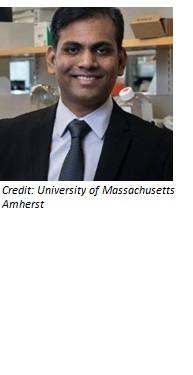
Researchers at the University of Massachusetts Amherst and the University of Massachusetts-Chan Medical School in Springfield, MA, have invented a new, sprayable delivery system for psoriasis medication that can be applied easily and locally to psoriasis lesions. The delivery system makes use of nanoparticles that contain psoriasis drugs, and these nanoparticles act like a trojan horse – the immune cells do not recognize the nanoparticles as a threat, but the medication they carry disrupts the overactive immune response. The researchers designed and tested nanoparticles in different shapes: rods, ellipses, and spheres, and discovered that nanorods inhibited 3.8 times more inflammation due to psoriasis than nanoellipses and 4.5 times more than nanospheres.
Check out the LinkedIn post for this story.
2) Mapping the surfaces of MXenes, atom by atom, reveals new potential for the 2D materials
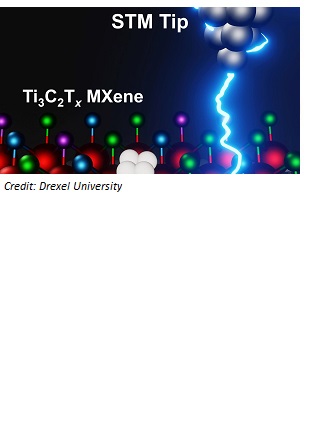
Researchers from Drexel University, California State University Northridge, and the U.S. Department of Energy’s Lawrence Berkeley National Laboratory have provided the first clear look at the chemical structure of the surface of a two-dimensional (2D) material called titanium carbide MXene. MXenes form a family of 2D materials that have shown promise for water desalination, energy storage, and electromagnetic shielding. "Getting the first atomic-scale look at their surface, using scanning tunneling microscopy, is an exciting development that will open new possibilities for controlling the material surface and enabling applications of MXenes in advanced technologies,” said Yury Gogotsi, the researcher who led this study.
Check out the LinkedIn post for this story.
3) Harnessing light-powered nanoscale electrical currents to propel emerging technologies
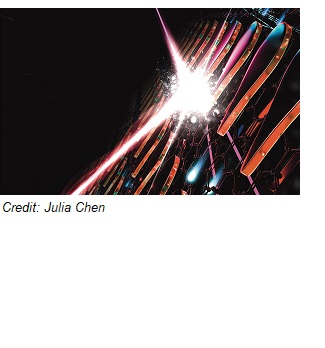
Scientists at the U.S. Department of Energy’s Los Alamos National Laboratory are developing nanometer-scale light-based systems that could deliver breakthroughs for ultrafast microelectronics and night-vision capabilities. The scientists have designed and fabricated asymmetric, nano-sized gold structures on an atomically thin layer of graphene. The gold structures, called nanoantennas, capture and focus light waves, forming optical "hot spots" that excite the electrons within the graphene. The hot spots are located only at the sharp tips of the nanoantennas, leading to a pathway on which the excited hot electrons flow.
Check out the LinkedIn post for this story.
4) Rice research unveils key dynamics of 2D nanomaterials with view to larger-scale production
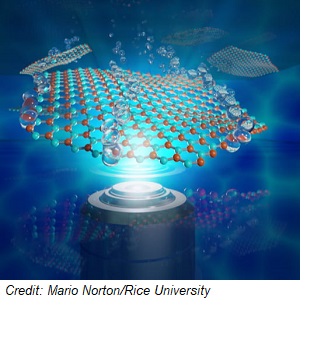
A team of Rice University researchers has mapped out how flecks of two-dimensional (2D) nanomaterials move in liquid. The researchers used glowing soap to tag samples of hexagonal boron nitride nanosheets and make their motion visible. Videos of this motion allowed researchers to map out the trajectories of the samples and determine the relationship between their size and how they move. These findings could help scientists assemble macroscopic-scale materials with the same properties as their 2D counterparts.
Check out the LinkedIn post for this story.
5) Off the clothesline, on the grid: MXene nanomaterials enable wireless charging in textiles
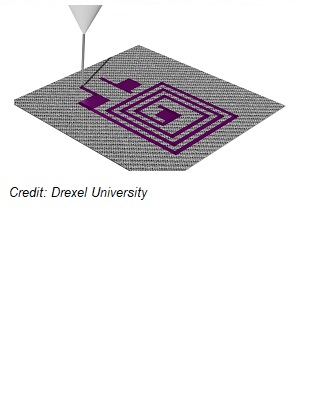
Researchers from Drexel University, the University of Pennsylvania, Accenture Labs (San Francisco, CA), and Corporal Michael J. Crescenz Veterans Affairs Medical Center (Philadelphia, PA) have built a textile energy grid that can be wirelessly charged. The grid was printed on nonwoven cotton textiles with an ink composed of MXene, a type of nanomaterial that is both conductive and durable enough to withstand the folding, stretching, and washing that clothing endures. The proof-of-concept represents an important development for wearable technology, which, at present, requires complicated wiring and is limited by the use of rigid, bulky batteries that are not fully integrated into garments.
Check out the LinkedIn post for this story.
6) Northeastern professor achieves atomically thin transducers could one day enable quantum computing at room temperature
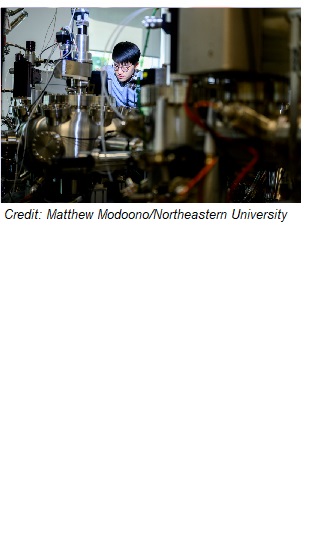
To function, quantum computers need to be kept very cold – just a few degrees above absolute zero. Now, researchers at Northeastern University, the University of California, Berkeley, the U.S. Department of Energy’s Lawrence Berkeley National Laboratory, and the National Institute for Materials Science in Tsukuba, Japan, have shown that one day, it might be possible to run quantum computers at room temperature. The researchers identified novel van der Waals heterostructures (created by combining layers of atomically thin materials, including graphene) that allow control of the coherent movements of atoms out of their equilibrium positions – also called acoustic phonons – at terahertz frequencies. With current quantum computer transistors, the control of acoustic phonons is limited to the gigahertz range. So, increasing the range of these transistors into terahertz frequencies – an increase by a factor of a thousand – opens the possibility of running quantum computers at room temperature.
Check out the LinkedIn post for this story.
7) Uneven strain distribution induces detwinning in penta-twinned nanoparticles
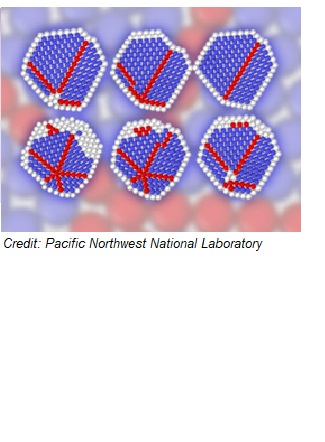
Researchers from Penn State and the U.S. Department of Energy’s Pacific Northwest National Laboratory and Lawrence Berkeley National Laboratory have studied penta-twinned gold nanoparticles under an electron beam and have, for the first time, directly observed partial dislocation slipping – an abrupt change in the arrangement of atoms, in which atoms can slide by one another. Twinned nanoparticles have regions of clear symmetry that share the same crystal lattice, separated by a clear boundary. The researchers found that tensile strain in asymmetrical five-fold twins of gold nanoparticles leads to twin boundary migration through dislocation sliding along the boundaries and dislocation reactions at the fivefold axis under an electron beam.
Check out the LinkedIn post for this story.
8) Researchers demonstrate new way to ‘squeeze’ infrared light
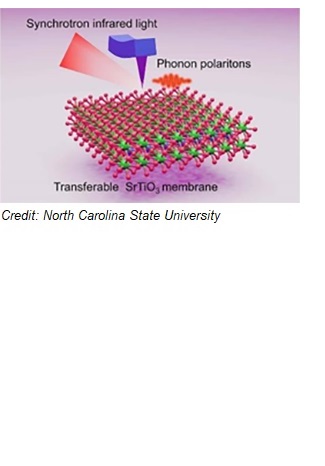
Researchers from North Carolina State University; Stanford University; the U.S. Department of Energy’s Lawrence Berkeley National Laboratory and SLAC National Accelerator Laboratory; and the University of Geneva have, for the first time, demonstrated that a specific class of oxide membranes can confine, or "squeeze," infrared light. The thin-film membranes (which are 100-nanometer-thick) confine infrared light far better than bulk crystals, which are the established technology for infrared light confinement. "We've demonstrated that we can confine infrared light to 10% of its wavelength while maintaining its frequency – meaning that the amount of time that it takes for a wavelength to cycle is the same, but the distance between the peaks of the wave is much closer together,” said Yin Liu, one of the scientists involved in this study. “Bulk crystal techniques confine infrared light to around 97% of its wavelength."
Check out the LinkedIn post for this story.
9) The corners where atoms meet may provide a path to new materials for extreme conditions

Researchers from Lehigh University, Johns Hopkins University, George Mason University, the University of Tennessee, Knoxville, and the U.S. Department of Energy’s Lawrence Berkeley National Laboratory and Sandia National Laboratories have discovered that the key to maintaining the stability of nanocrystalline materials (which are made of many tiny crystals) at high temperatures lies in triple junctions – corners where three of these nanocrystals meet. What the scientists found is that when certain atoms are added to form an alloy, they prefer to occupy sites at these triple junctions, which prevents the nanocrystalline material from losing its strength over time.
Check out the LinkedIn post for this story.


